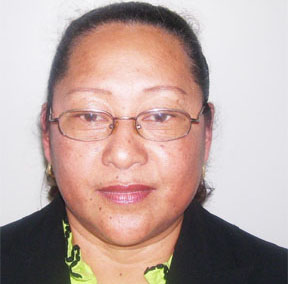The Guyana Geology and Mines Commission yesterday revealed that it has the mining royalties accruing to Amerindian communities since the passage of the Amerindian Act in 2006, a figure which reportedly amounts to hundreds of millions.
According to Clause 51 of the Act, “The Guyana Geology and Mines Commission shall transfer 20% of the royalties from the mining activities to a fund designated by the Minister for the benefit of the Amerindian Communities.”
On Tuesday GGMC Commis-sioner William Woolford told Stabroek News that as far as he was aware no payments had been made in keeping with the provision and that the matter was before the agency’s legal advisor Rosemary Benjamin-Noble.

This newspaper yesterday spoke to Benjamin-Noble and she said they had started a process “a while back” and had been putting aside the money in anticipation of when they would be asked to transfer it to the identified fund.
“Whenever required we are prepared to do so,” the attorney stated. According to Benjamin-Noble, they are now awaiting the set up of that mechanism. However, she was unable to pronounce on the total of the accrued sum. Numerous efforts since Monday to elicit a comment on the matter from Minister of Amerindian Affairs Pauline Sukhai were unsuccessful. Additionally, Stabroek News was told that her predecessor, current Minister of Foreign Affairs Carolyn Rodrigues-Birkett who was in office at the time the Act was passed, is currently overseas on official business.
Questions have been raised as to why the government has not set up this transfer mechanism even as it makes token presentations to indigenous communities across the country.
The issue first surfaced in September when chartered accountant and attorney Christopher Ram in a letter to Stabroek News pointed out that the Amerindian Act of 2006 had not been in force all these years even though it had been passed in parliament and the government on numerous occasions referred to it as evidence of its respect for the rights of the indigenous peoples.
“I find it hard to believe that this was any innocent oversight by the Amerindian-loving government, if there is such a thing. After all, for more than three years, there were three Amerindian MPs in the Cabinet. At every opportunity, whether it is in the `Cabinet Outreaches’, in the National Assembly, in national and international press conferences, and to the Norwegians, the government never ceased to showcase the act as evidence of its respect for the rights of our indigenous peoples. Now it seems that all might be a deception, a sham and a façade, cynically disguised”, Ram wrote in his letter.
He posited that a possible reason why the act was not brought into force was because of the GGMC’s obligation to transfer the 20% in royalties. Ram pointed out that the financial statements of the GGMC show that mining activities garnered more than $8.5B since June 2006. The failure to bring the act into force has, therefore, deprived Amerindian communities of approximately $1.7B, he said. He also noted that during the same period, the GGMC transferred $1.8B to NICIL.
Ram, in his letter, said that it is a test of the sincerity of the government and the onus is on the administration “to prove that it does not consider the Amerindians as naïve and gullible, ready to give up their legal right to $1.7 billion in return for a few outboard engines here, some chainsaws there, trips
for its leaders to come to Georgetown to perform, or go on window-dressing trips to Norway”.
No response had been forthcoming from the administration until last week when Minister of Amerindian Affairs, Sukhai tabled the Amerindian Act 2006 (Commence-ment) Bill in the National Assembly. The bill is due for its second reading today.
According to the Explanatory Memorandum, the Bill seeks to validate the commencement of the Amerindian Act 2006 with effect from March 14th, 2006. “It validates all acts and things done between 14th March, 2006 and the enactment of this Act which would have been lawful if the Amerindian Act 2006 had been brought into force by Order.
All persons are freed, acquitted, discharged and indemnified from all liability and legal proceedings of any kind in respect of acts and things done between the 14th March, 2006 and the enactment of this Act”, it says.
It says that no person shall be held guilty of a criminal offence on account of any act or omission and no person shall be made or shall become liable to any penalty in respect of any act of commission or omission under the Amerindian Act 2006 between 14th March and the enactment of the Bill.
According to the Explanatory Memorandum, an order was made bringing the Amerindian Act 2006 into force in April 2006. “This order was signed by the Minister but a Gazette copy cannot be found. Hence it is necessary to proceed by way of an amendment Act to bring the Amerindian Act into force and to effect the necessary validation”, it says.
In his letter, Ram had recalled that a Government Information Agency release in early March 2008, reported that the Amerindian Act 2006 was passed on February 16, 2006 and assented to by the President on March 14, 2006 and had “paved the way for Amerindians to empower themselves socially, economically and politically.”
However, observers have questioned why the royalties were not transferred before if the government thought the Act was in place and if they knew it was not in place then why no earlier move had been made for its commencement.




